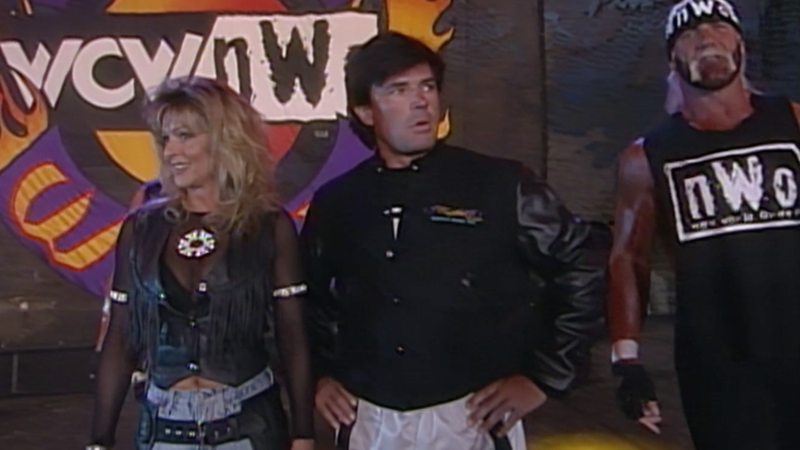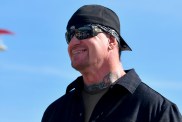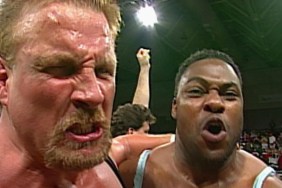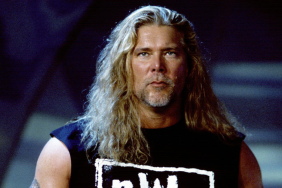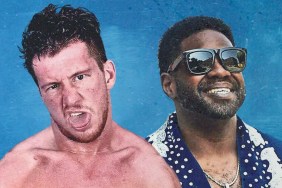Eric Bischoff says WCW Road Wild worked in a lot of respects but the event did present some overwhelming challenges that prevented it from becoming a long-term success.
Bischoff recently spoke with WrestleZone Managing Editor Bill Pritchard about the former WCW pay-per-view that ran in August between 1996-1999 (the event was named ‘Hog Wild’ for the first show) and how the theme was created. Bischoff explained that he is the type that works backward from his goals, and in the case of Sturgis, there were a couple of different goals he was trying to attain when that decision was made.
Bischoff explained that WCW was increasing the number of pay-per-view events they hosted shortly after he took over, and it was seen as a way to increase revenues for the company.
“That was the only source of revenue WCW really had; they weren’t making money on house shows, pay-per-views were technically making money as an event, the company as a whole was not making money,” Bischoff said, “the pay-per-views themselves were profitable as a line item. There was very little money in merchandising and licensing, ticket sales were next to nothing, so the only opportunity we had to increase revenue was to increase the pay-per-views.”
Bischoff said it became apparent to him early on that the reason pay-per-views worked so well was not only because of it served as the culmination of a long-term build, but the events themselves were uniquely branded. He credits WWE as the ‘pioneers’ of wrestling pay-per-view, adding that they did such a good job of it and WCW was adding events but they were really only different in name only.
“I realized almost all of these pay-per-views that we were adding, we were giving them different names but they felt the same, there was no personality. Starrcade had a little bit of a personality and a history and a legacy, Bash At The Beach was kinda sorta but not really, in ’93 it hadn’t taken off as a tent pole event. So I knew that if we were going to add Sturgis or add an August pay-per-view that it had to be so different than the other eleven pay-per-views that it stood on its own in terms of a brand. That was the biggest reason, but almost as big as that was the fact that being familiar with Sturgis, I saw how much money Dodge trucks, Chevy, Ford, Jim Beam, Coors, Budweiser, you name it—every major advertiser in America that targets men 18-49 was spending a lot of money to be associated with Sturgis from a branding perspective,” Bischoff said, “And I went ‘Wait a minute… that makes sense.’ I’m doing it and they’re doing it, and the likelihood that I’m able to develop a sponsorship or advertising relationship with some of these clients is pretty high if I’m the only one there doing it in a very popular form of entertainment that targets the same demographic that those advertisers are trying to attract. It was a no-brainer from a business perspective.”
As far as why it didn’t work, Bischoff says it comes down to two reasons—but they aren’t the ones people think they are. Bischoff noted that there have been stories of the lack of ticket sales at Sturgis, and says he sees that to a point, but it led to a much bigger opportunity through advertising.
“We gave up that [gate] but we enhanced—and my logic paid off very quickly, we started getting automotive advertisers very quickly, which put a lot more revenue in the bottom line than $150,000 worth of ticket sales. So it wasn’t the ticket sales, or lack thereof, that made it not successful. The primary reason that it wasn’t successful was that it was just too expensive to produce there. Sturgis is in the middle of freakin’ nowhere. I mean that, nowhere. It’s a small airport and flights are very limited. In the summer it’s one of the most popular destinations in America, not just Sturgis,” Bischoff said, “but the whole Western side of South Dakota. Rapid City, the Black Hills, Mount Rushmore, the area where I live, a lot of people fly into South Dakota in the summertime for vacation. A lot of people have summer homes and recreational properties and there’s not a lot of flights in and out of there, so getting people in and out is a problem.”
Bischoff noted that it’s hard to gauge just exactly how many people descend on the region in a given year—you’ll find estimates on the low side of 250,000, estimates on the high side of 650,000 people—but the large crowd also creates a problem with lodging, and you have to contend with the weather as well.
“Rooms are really hard to find, and it’s really uncomfortable because rooms are hard to find. Shooting outside is really hard—and I don’t mean Daily’s Place like I shot with AEW, that is a really nice facility. It’s a really nice amphitheater and it’s got a roof and weather can be an issue,” Bischoff said, “but not like when you’re out in the middle of a parking lot with nothing over you other than lighting rigs and shit that will fall on you if the wind comes through. and it did a few times, we had tornadoes come through a couple of times that almost blew our entire set apart. So that risk/reward analysis after you do it two or three times, you go ‘well, I don’t know if I want to do that anymore.’ It works in a lot of respects but the expense of doing it and the logistical challenges are overwhelming.”
